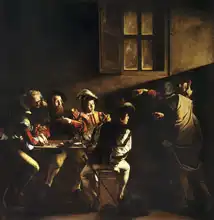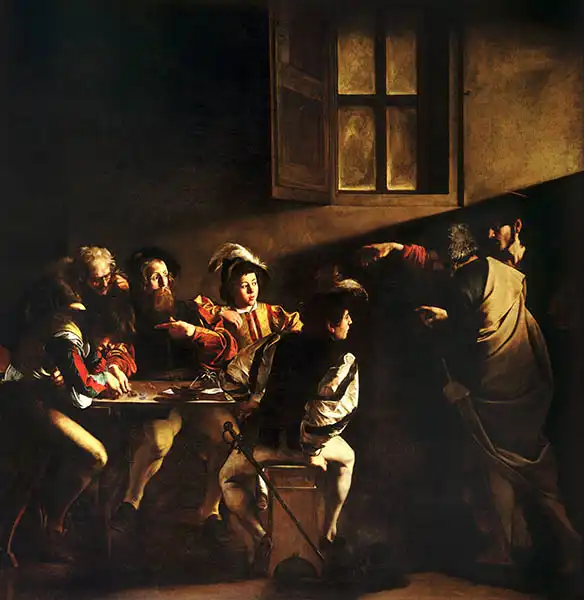About this finishing
Print. The image is printed on the top quality 10-ink HP Z9PS printer on HP matte 270 g / m2 paper. You can choose any size to an accuracy of 1 cm. A margin of 5 cm around the image is added to the size of the motif.


You can find a detailed description about our finishings
here.
The Calling of St Matthew
Date:
1599–1600Medium:
oil on canvasLocation:
San Luigi dei Francesi, Rome Michelangelo Merisi da Caravaggio painted a painting called "The Calling of St. Matthew" around 1599-1600. This painting represents a
biblical scene where Jesus calls St. Matthew to become his disciple, even though Matthew was a tax collector at the time.
The painting shows the moment when Jesus enters the room where Matthew is sitting with other tax collectors and points to him with his finger, calling him seriously. Matouš, surprised and taken aback, reacts with uncertainty about his chosen one. Around the table sit other figures, some of whom are curiously focused on Jesus and Matthew, while others are absorbed in their own activities.
Caravaggio uses characteristic contrasts between light and shadow in this work, which creates a dramatic effect and emphasizes the emotional tension in the scene. Realism and attention to detail, together with a unique lighting treatment, are typical of Caravaggio's
baroque artistic aesthetic. This painting is one of Caravaggio's major works that influenced many artists of subsequent generations.
Caravaggio painted picture The Calling of St Matthew in 1599–1600. Prevailing color of this fine art print is dark and its shape is square. This art piece is located in San Luigi dei Francesi, Rome. This image is printed on demand - you can choose material, size and finishing.
Caravaggio (Merisi Michalengelo) (1571-1610). Italian
Baroque painter, who in his short life was significantly influenced by Baroque painting. Born to a family of architects in Caravaggio, he was an unwary adventurer who liked teasing and toying with fate. In his early works, he preferred
realism. He worked with light and shadow, combining natural and architectural elements. He captured dramatic scenes (and his images are very sensational) by utilising hyperrealism and an impressive use of light and shadow. An intense light side, which he started using, helped him add intensity to colours and link the composition into one unit. Light, intense colours, and choice of motifs (often with the presence of death) are the cornerstones of his work, which indelibly influenced the history of art.


